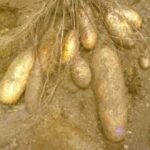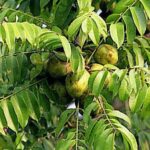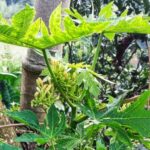Synonyms
White Berry bush, Snowball bush (Eng.); Witbessiesbos (Afrikaans); Chinese waterberry (China), Goowal (Yawuru Australia); Flueggea virosa (Lat.) – Flügge was a German botanist, and virosa means poisonous or having a bad odor.
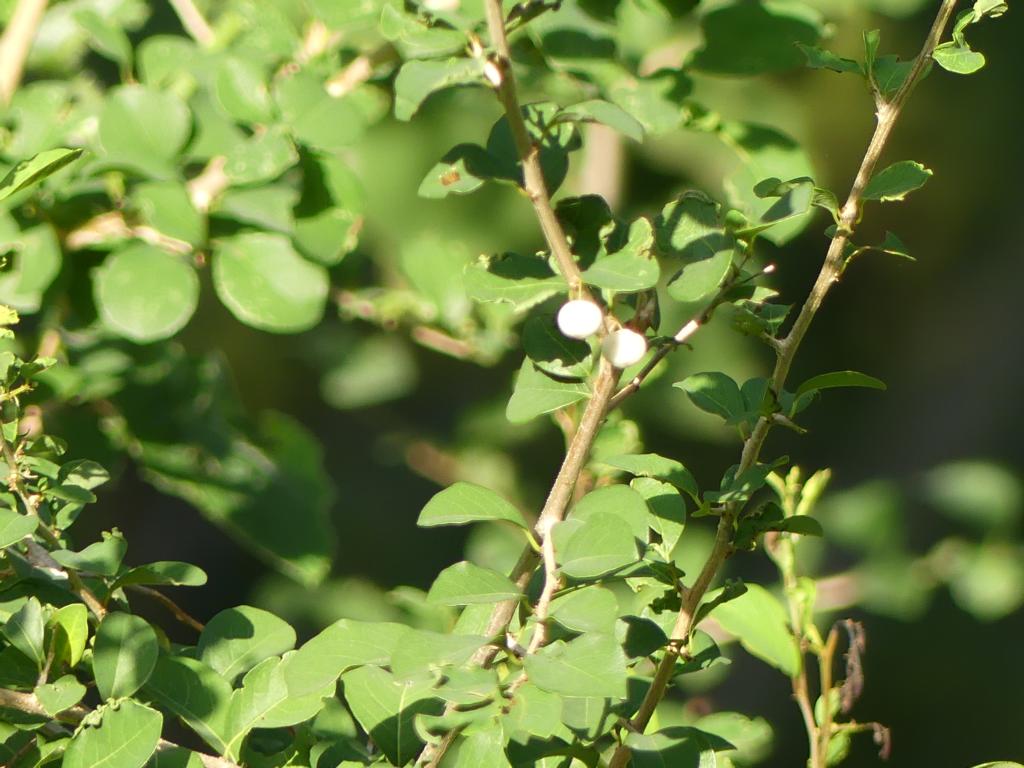
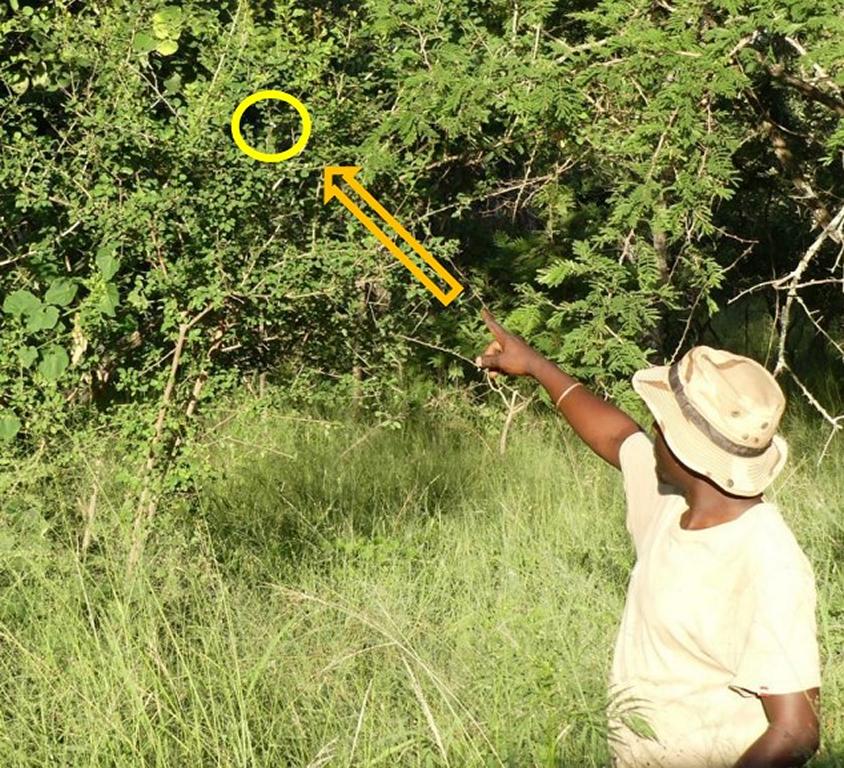
Distribution

Flueggea virosa commonly grows in deciduous woodlands, forest margins, rocky areas, and along rivers. It can also thrive in areas behind the initial coastal dunes. This bush can live in hot and dry regions and can also survive mild frosts.
The White Berry bush has spread nearly throughout the Paleotropical region, including Papua New Guinea and Australia. It has also been found in Florida, USA. In all these areas outside its native range in Southern Africa, it is considered either an alien or, as in Florida, an invasive species.
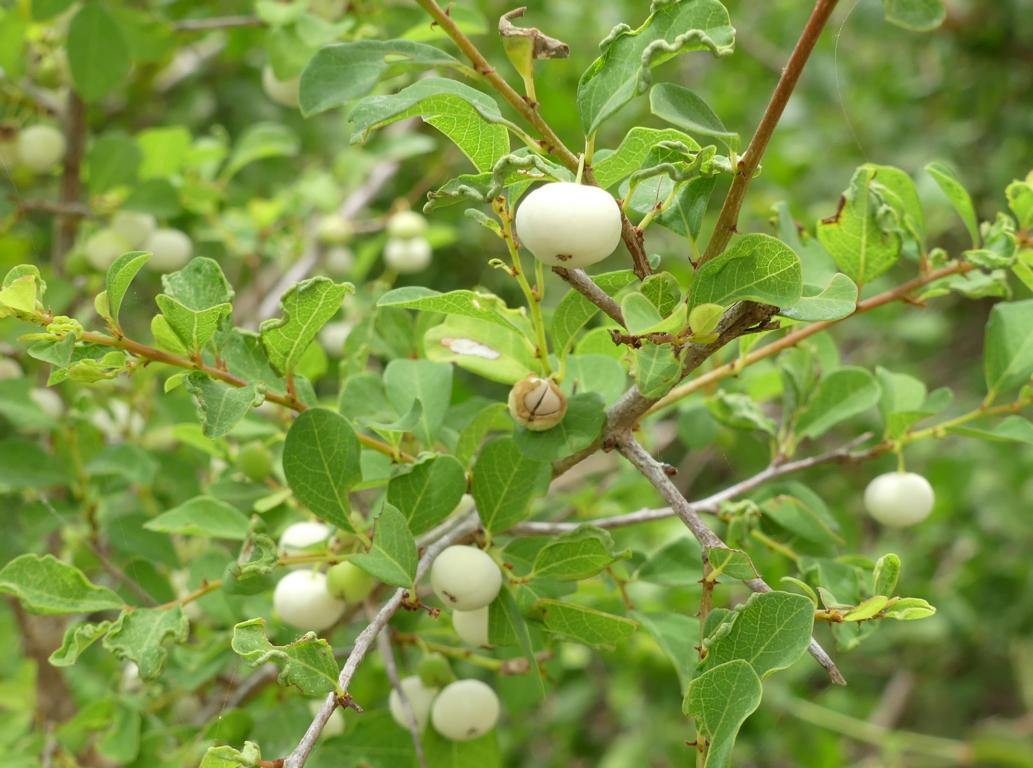
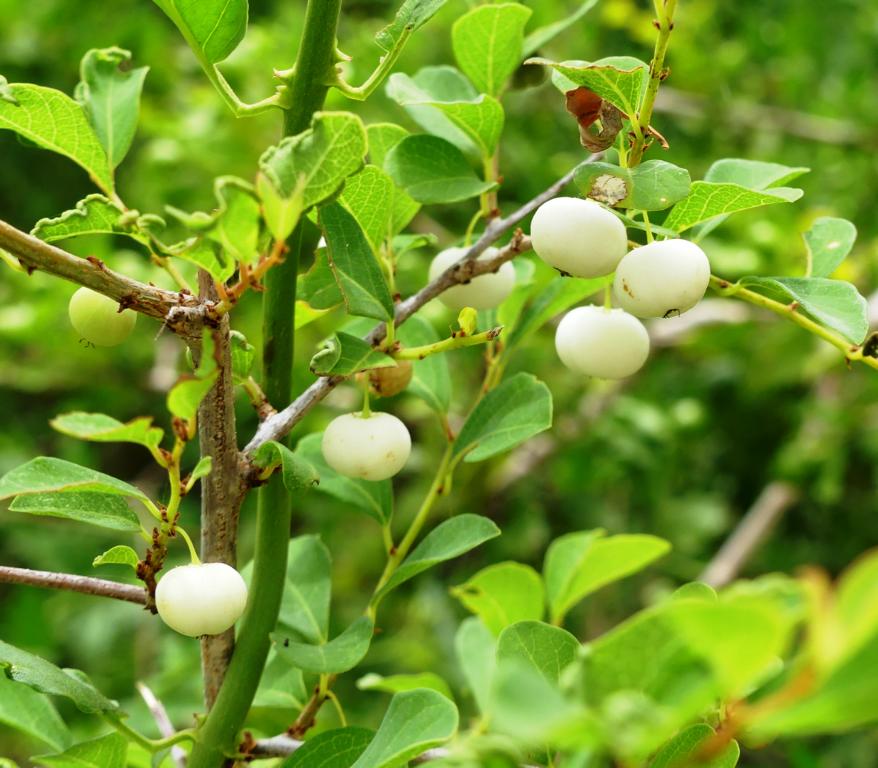
Description
The White Berry bush (Flueggea virosa) produces male and female flowers on separate plants. This multi-stemmed shrub is fast-growing and bushy, usually reaching 2 to 3 meters with small spine-like branches. Its leaves are densely arranged along these spiny branchlets. The flowering season is from October to January, with small, pale-green flowers that emit a strong, sweet fragrance after every good rain. These fragrant flowers attract brightly colored Jewel beetles to the bush.
Following the flowering season, the female plant bears pale green berries weighing down the branches. As they ripen, the berries soften and turn white with sweet flesh. They can be easily collected by hand and are most abundant from January to February, though they can occur from November to June.
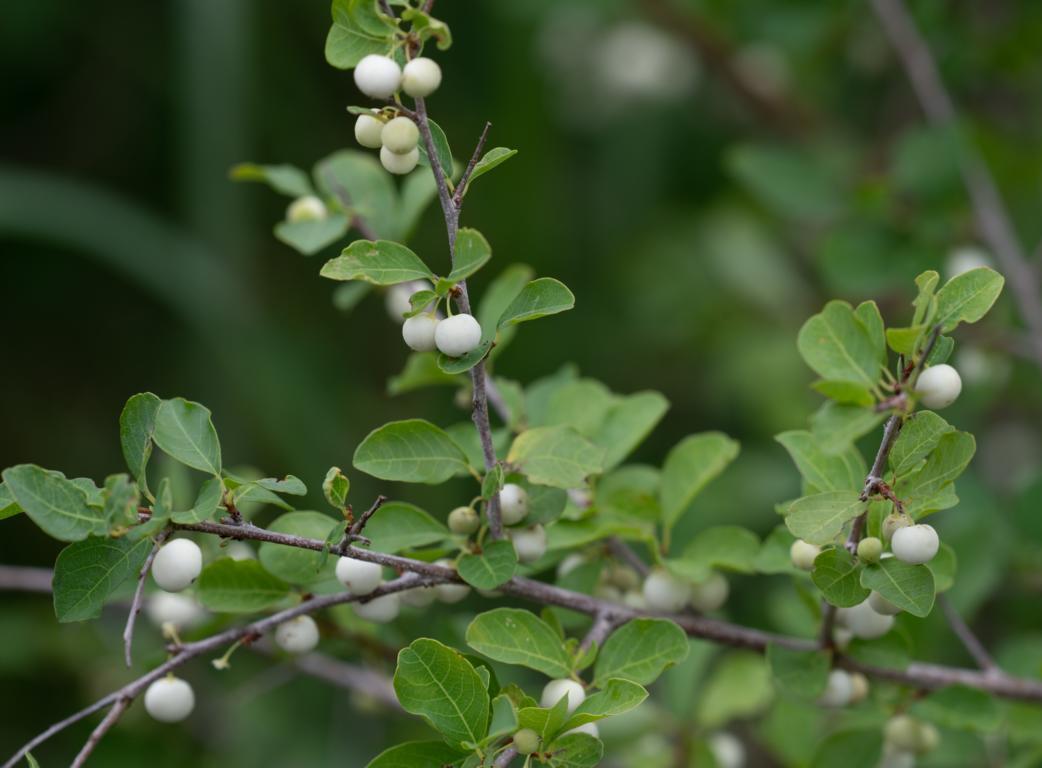
Uses
- The small, white fruits of Flueggea virosa are sweet and highly sought after as a food source. However, one should be cautious not to bite into the little seed pip in the middle, as it is pretty bitter.
- The fruit can also be used to make red dye by pounding it in hot water. This dye can be utilized as red ink.
- In the past, people from the Vhembe region in Limpopo, South Africa, and Australian Aboriginals used dry sticks of Flueggea virosa for hand drill fire-making. Wood is also an excellent fuel source and is used to make charcoal.
- The plant’s long, straight, and slender virgate stems are used for weaving fish traps and basketry.
- Twigs from the plant can be cut and used as toothbrushes.
- In India, the plant’s astringent bark was used to stun fish, although its toxicity to fish is relatively low. The bark contains up to 8.9% tannins and alkaloids.
- Traditional medicine uses the plant to treat a wide range of conditions. All plant parts are used, although the root is considered the most active. The plant contains several alkaloids and tannins, among other medically active compounds. More information on this can be found here.
Lessons learned from African White-Berry fruits:
- The Whiteberry bush, originally from Southern Africa, has now spread to various other regions. These include most of the Paleotropical Floral Kingdom, Papua-New Guinea, Australia, and the USA.
- The fruits of the White Berry bush can be collected from November to June and are known for their exceptionally sweet taste.
- Different parts of the plant have various uses, including as a source of dye, fire sticks, firewood, weaving material for fish traps, toothbrushes, and chemicals to stun fish.
- The most significant use of the White Berry bush is its medicinal properties, which are derived from various parts of the plant.
.



